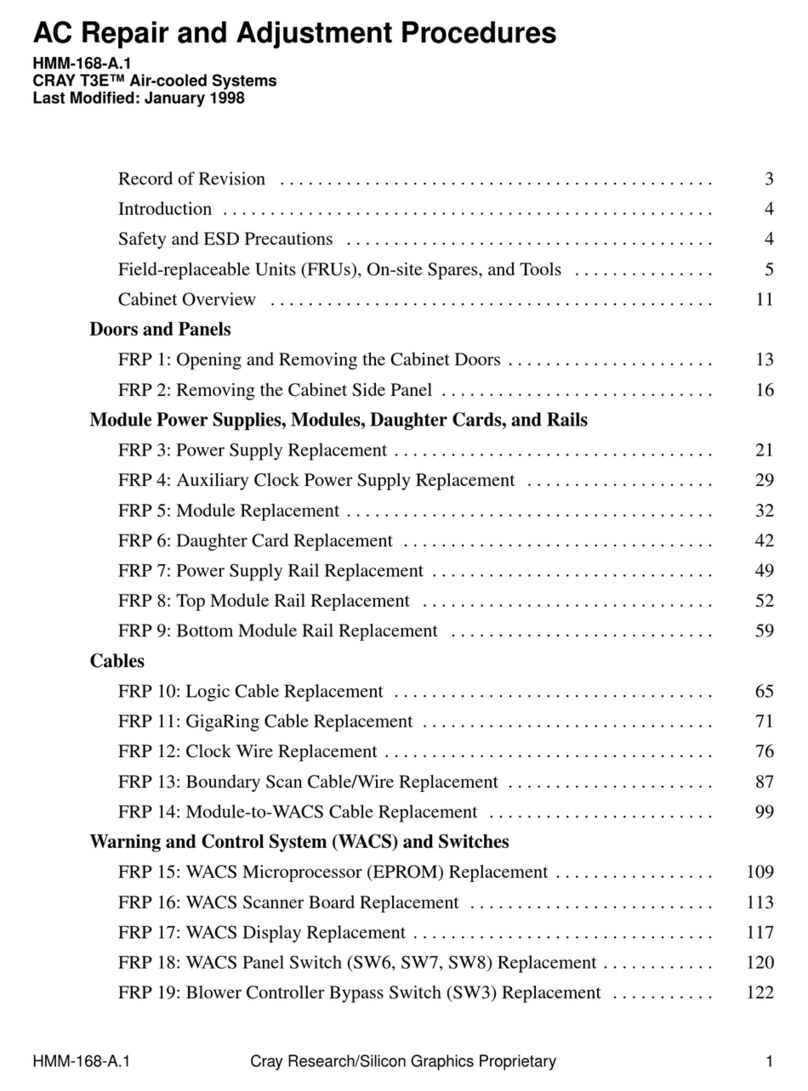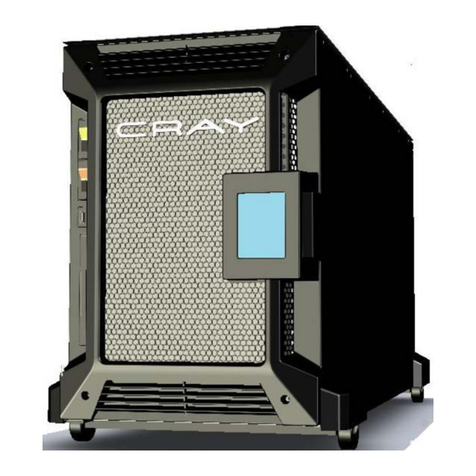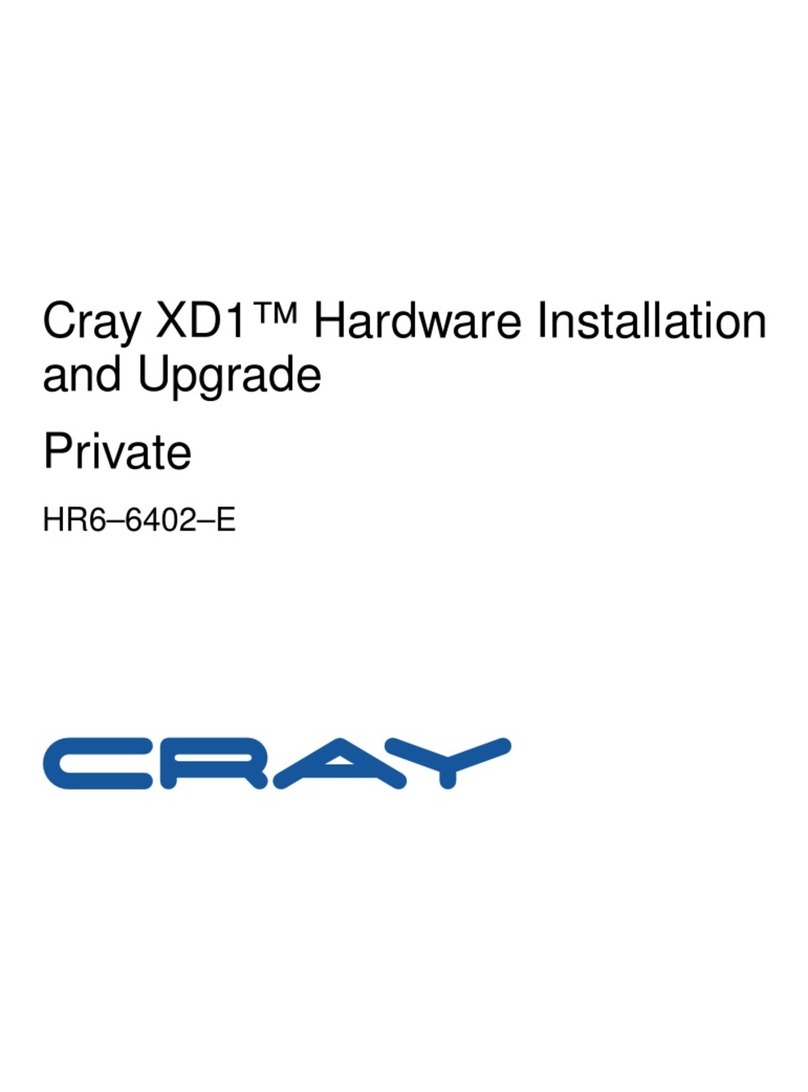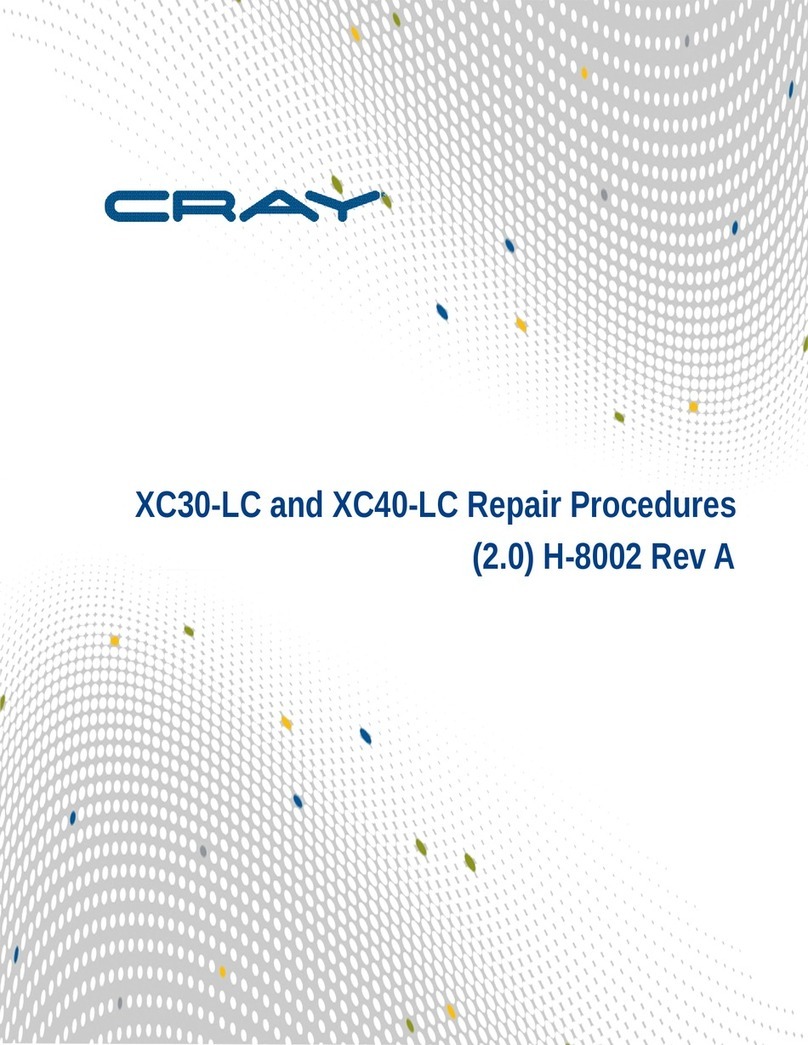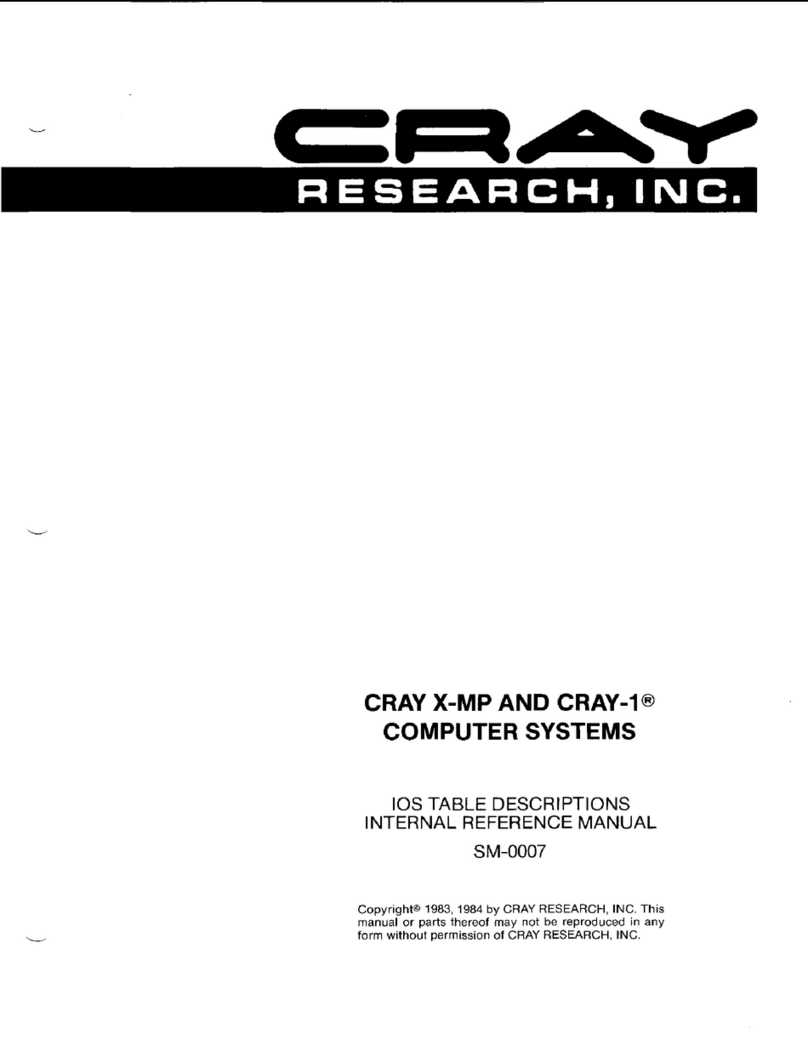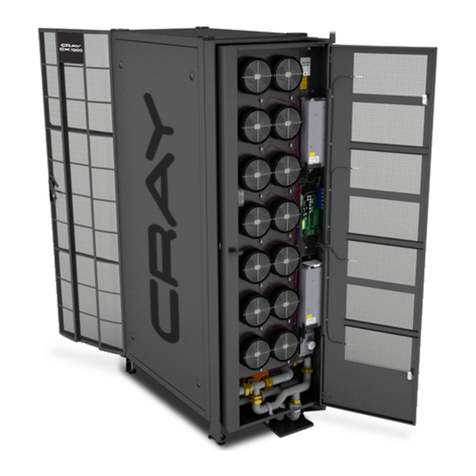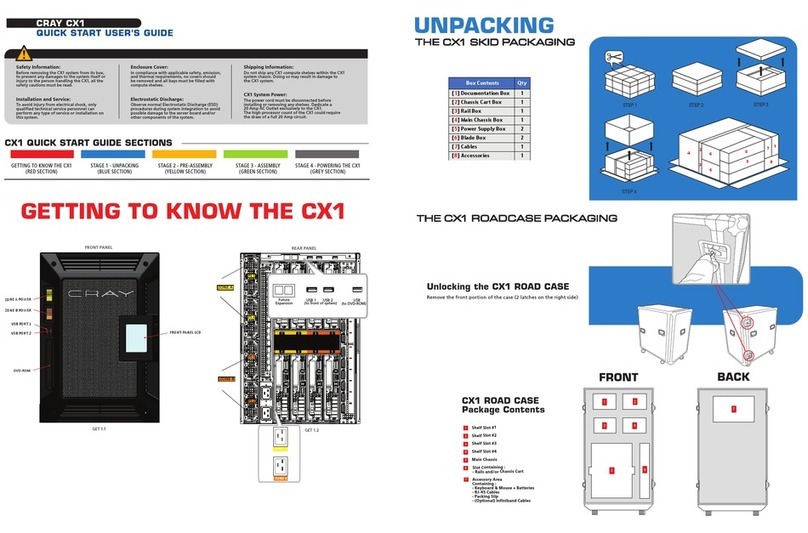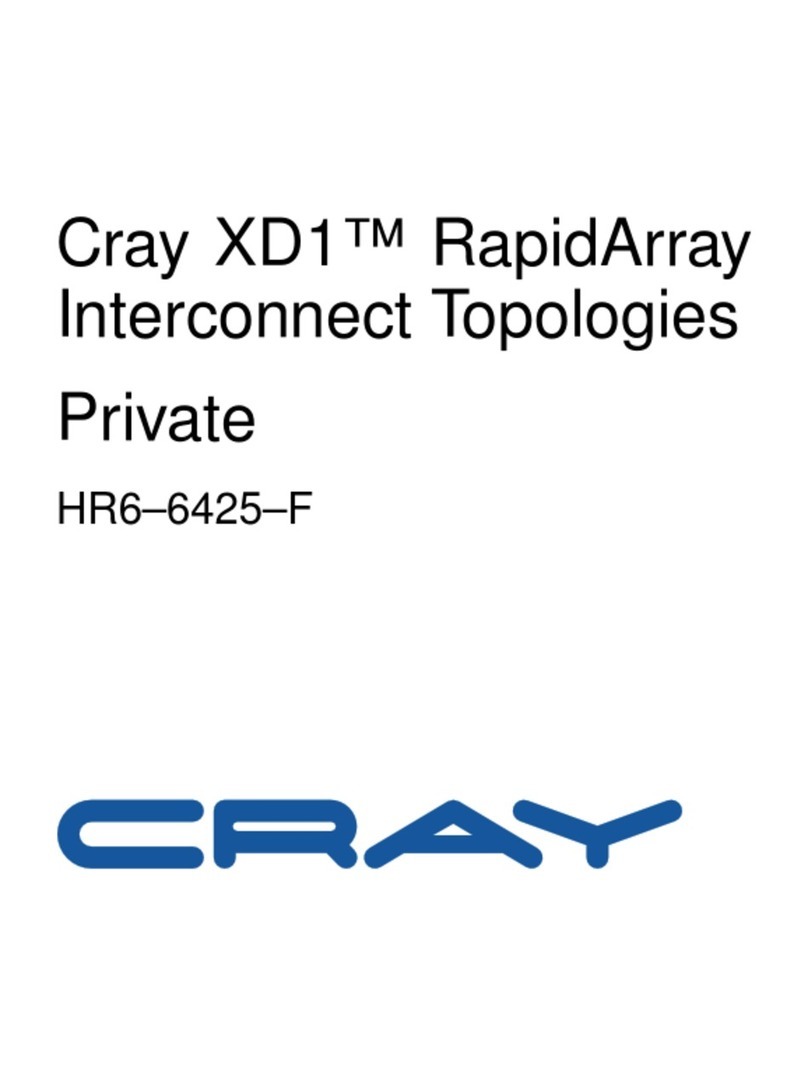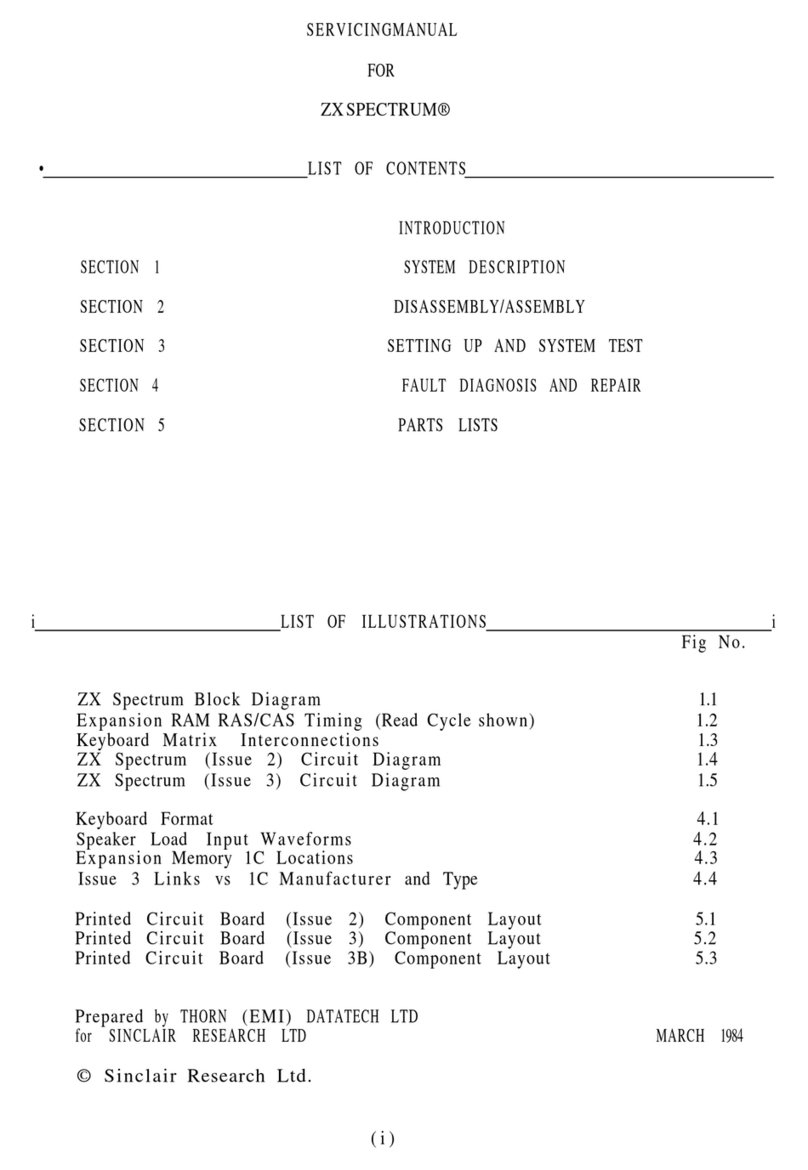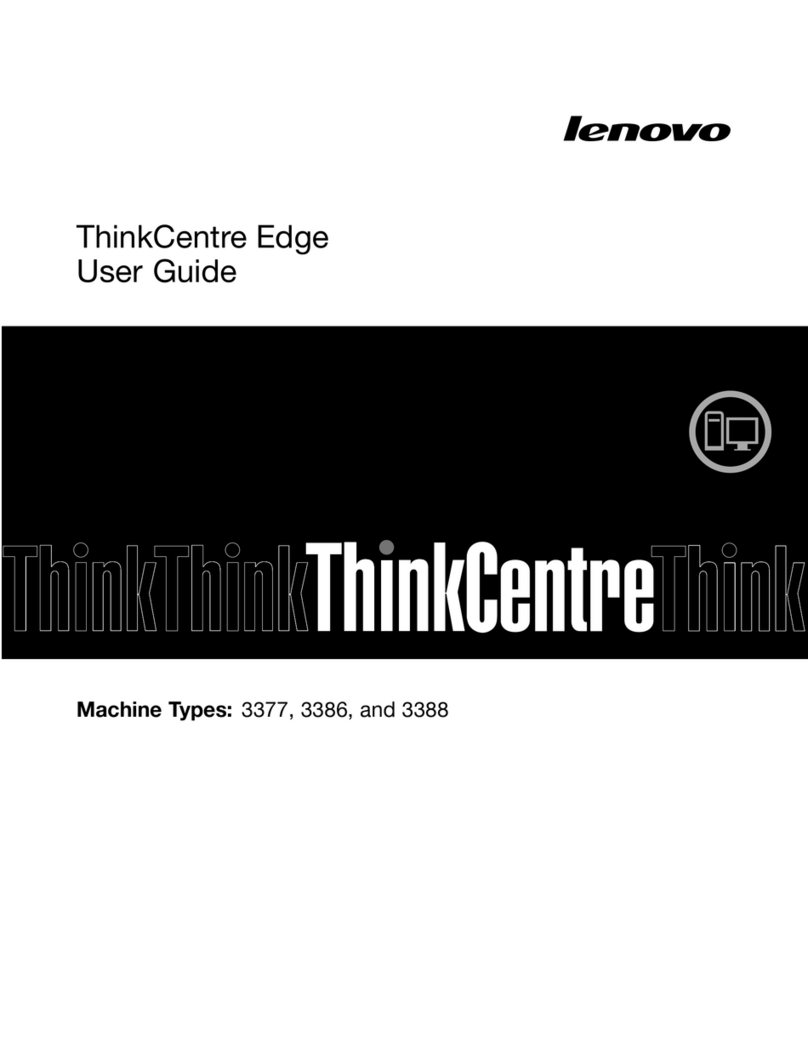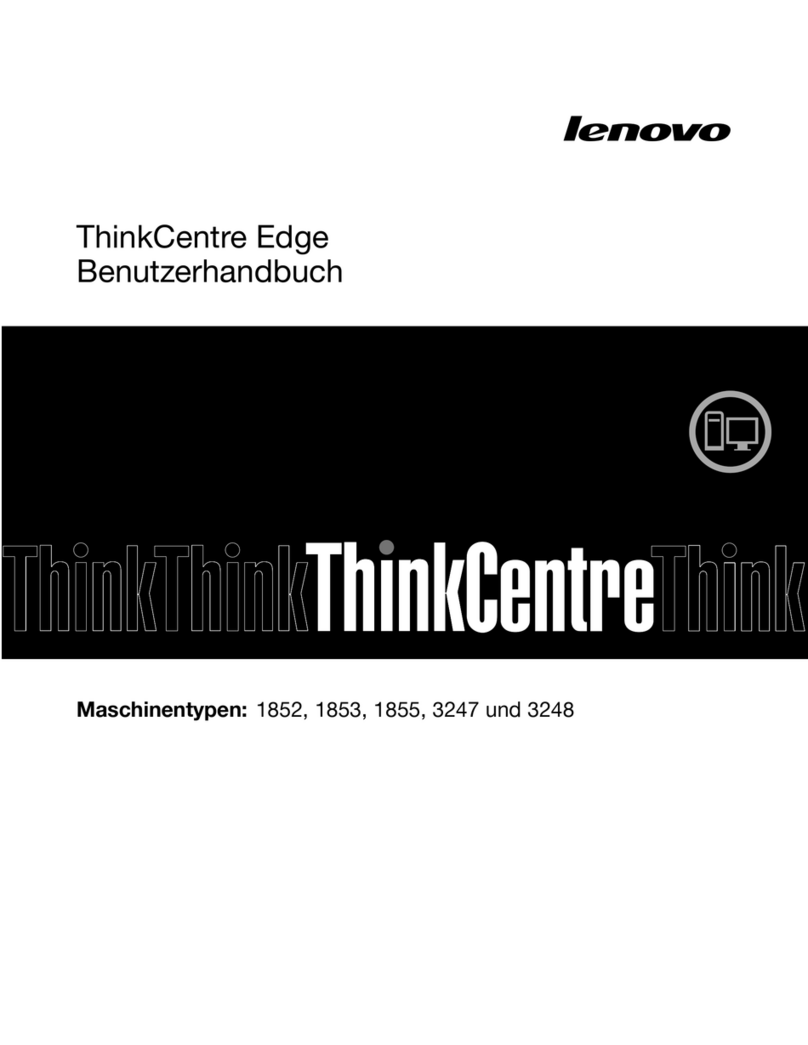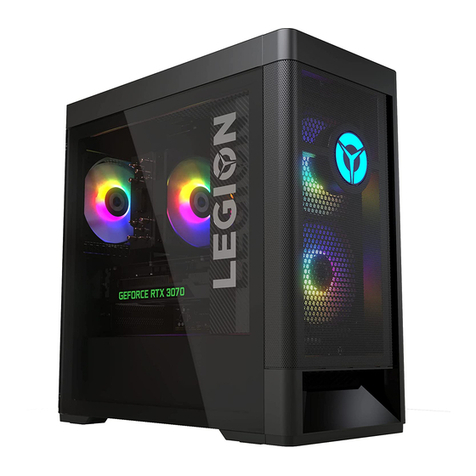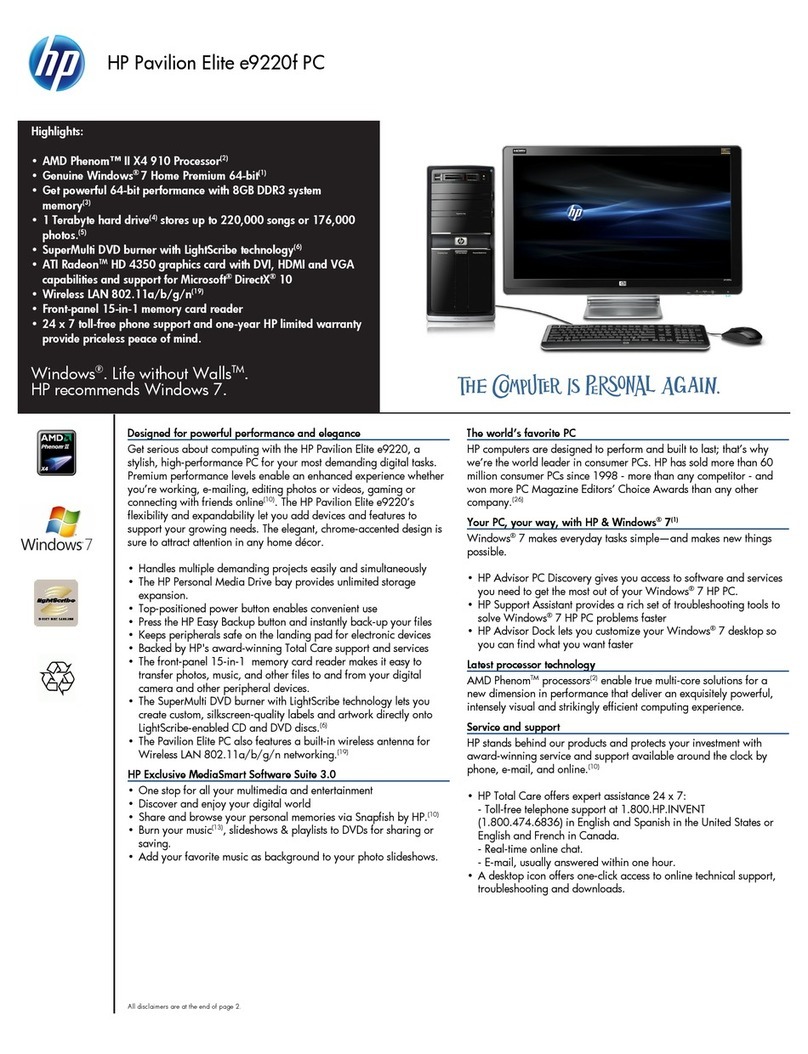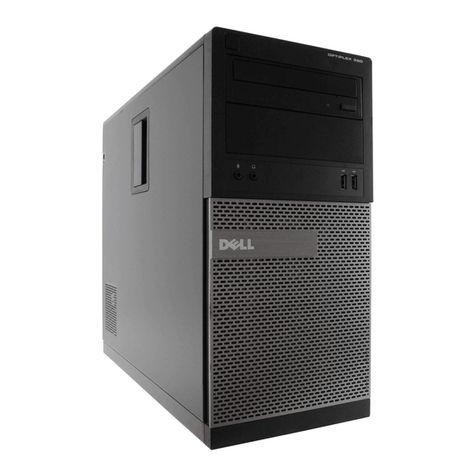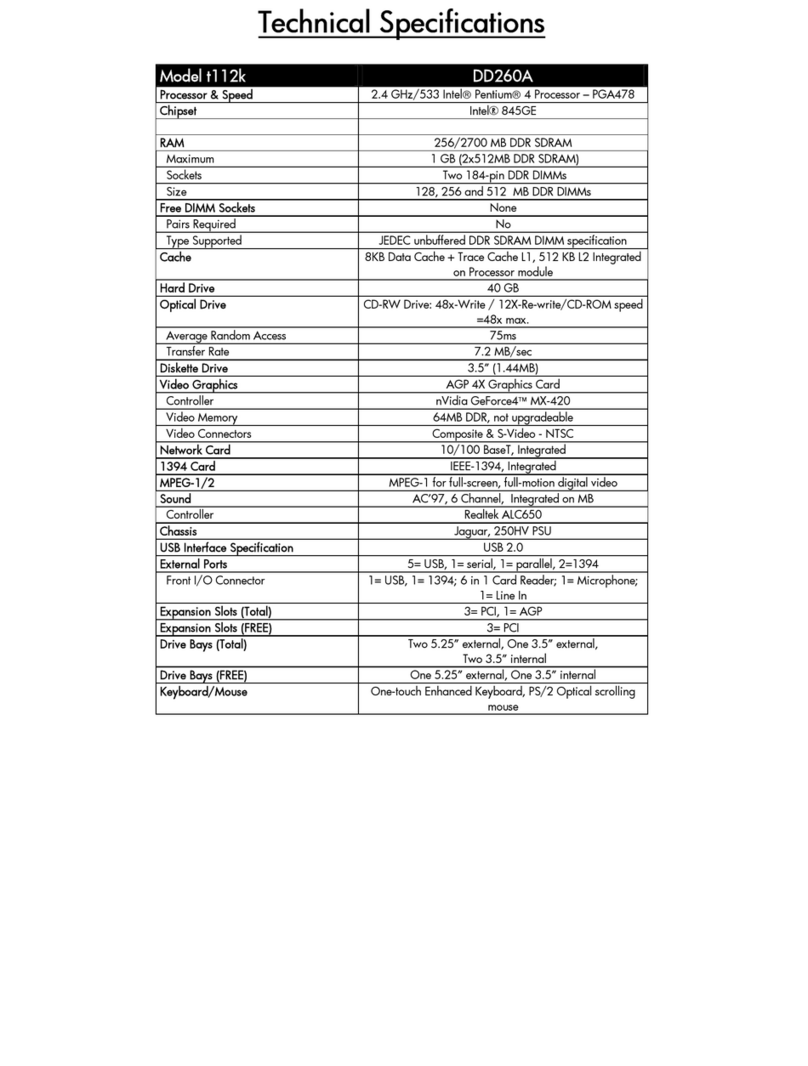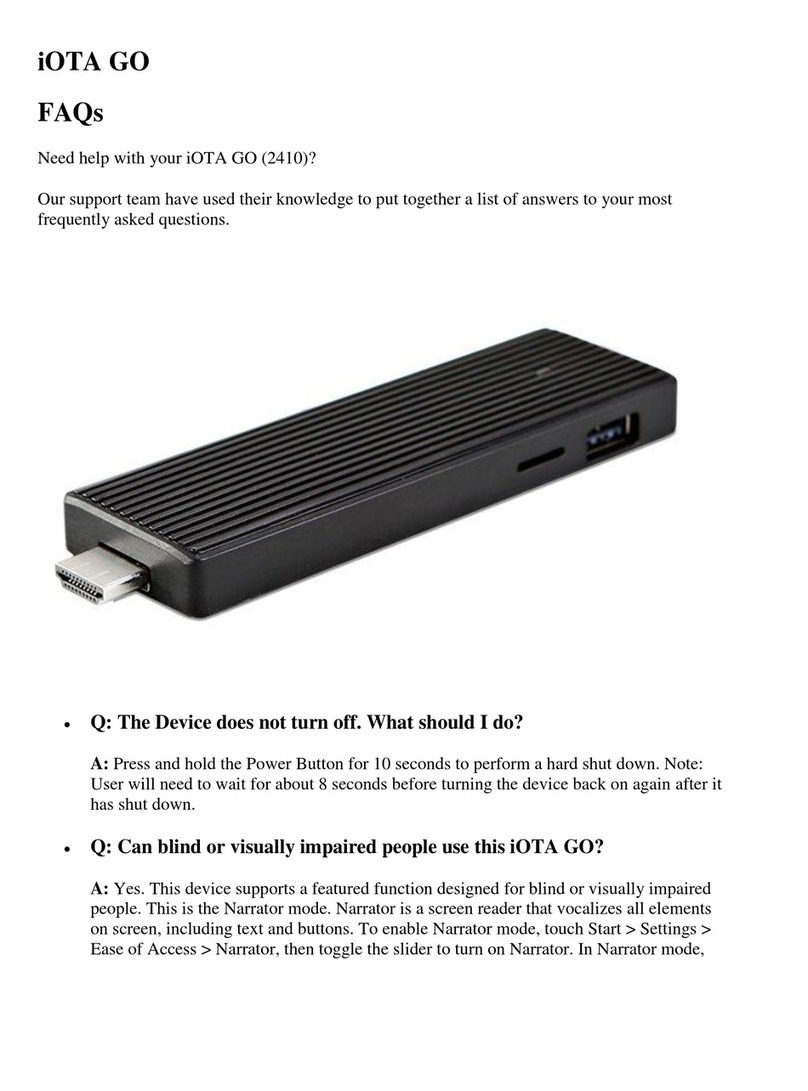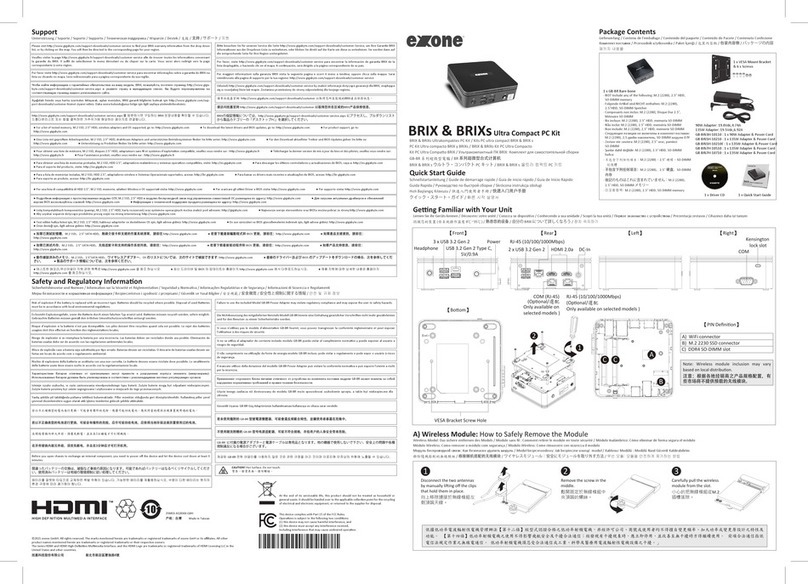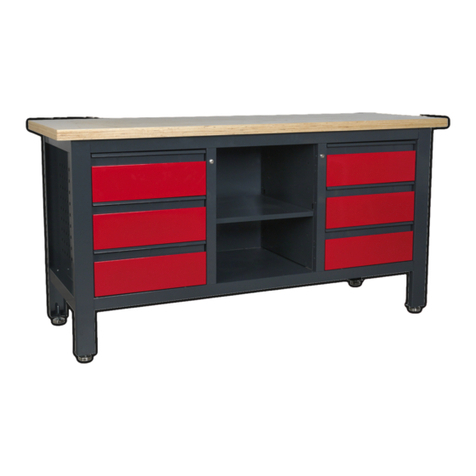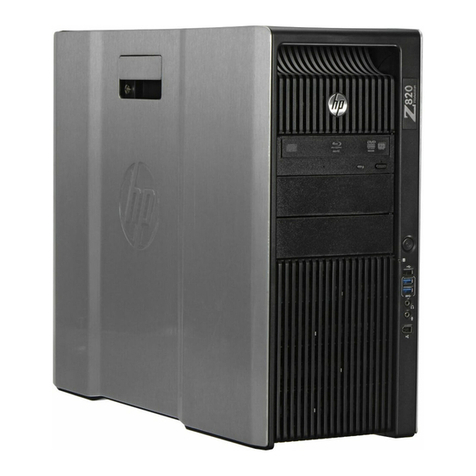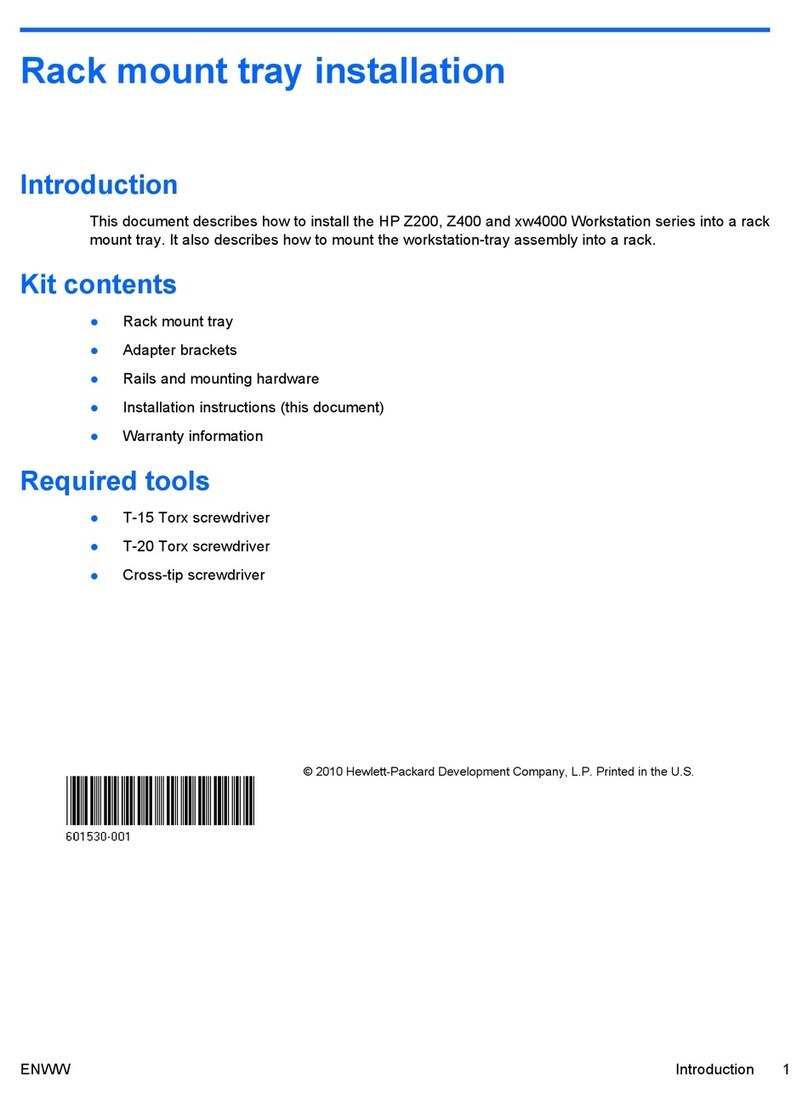Cray X-MP Series User manual

c:
RESEARCH
J
INC.
Any
shipment
to
a
country
outside
of
the
United States requires a U.S. Government
export
license.
CRAY COMPUTER SYSTEMS
CRAY X-MP SERIES
MODELS
22
&
24
MAINFRAME REFERENCE
MANUAL
HR-0032
Copyright© 1982, 1984
by
CRAY RESEARCH, INC. This manual
or
parts thereof may
not
be reproduced in any form without
permission of CRAY RESEARCH, INC.

E i
RECORD OF REVISION
~ESEA~CHJ
INC.
PUBLICATION
NUMBER
HR-0032
Each time
thil
manuel il revised and reprinted, all
chan~
issued against
the
previous version in
the
form
of
change packets are
incorporated into
the
new version and
the
new version IS
..
Igned an alphabetic level. Between reprints, changes may be issued
against
the
current
version in
the
form of ch.ange peckets. Each change packet
is
assigned 8 numeric designator, starting with
Ol
for
the
first change packet
of
each revillon level.
Every
P9
changed
by
a reprint
or
by
a change packet has
the
revision level
and
change packet number in
the
lower righthand
corner. Changes
to
part
of
8
P8SlI
are noted
bY
a change bar along
the
margin
of
the
page. A change bar in
the
margin opposite
the
page number indicates
that
the
entire page is new; a
dot
in
ttle same place indicates
that
information hasbeen moved from
one
page
to
another,
but
has
not
otherwise
changed.
Requests for copies
of
Crav Research, Inc. publications and comments
about
these publications should
be
directed to:
CRAY RESEARCH, INC.,
1440
Northland Drive,
Mendota Heights, Minnesota
55120
Revision
A
BR-0032
Description
November, 1982 -
Original
printing.
July,
1984 -
Reprint
with
revision.
Instructions
were added
for
hardware
performance
monitoring
and
SECDED
maintenance
functions.
Information
was
also
added
to
explain
how
the
Second
Vector
Logical
functional
unit
is
used
although
this
functional
unit
is
not
available
on
all
systems.
Numerous
technical
and
editorial
changes
and
correccions
were
also
made.
This
revision
obsoletes
all
previous
printings.
ii
A

PREFACE
This
publication
describes
the
functions
of
CRAY
X-MP
Series
dual-processor
computer
systems,
models
22
and
24.
It
is
written
to
assist
programmers
and
engineers
and
assumes
a
familiarity
with
digital
computers.
The
manual
describes
the
overall
computer
system,
its
configurations,
and
equipment.
It
also
describes
the
operation
of
the
Central
Processing
Units
that
execute
instructions,
provide
memory
protection,
report
hardware
exceptions,
and
provide
interprocessor
communications
within
the
computer
systems.
Details
of
the
I/O
Subsystem,
the
disk
storage
units,
and
the
Solid-state
Storage
Device
are
given
in
the
following
publications:
HR-0030
HR-0630
HR-003l
I/O
Subsystem
Hardware
Reference
Manual
Mass
Storage
Subsystem
Hardware
Reference
Manual
Solid-state
Storage
Device
(SSO@)
Reference
Manual
HR-0032
///////////////////////////////////////////////////////
WARNING
This
equipment
generates,
uses,
and
can
radiate
radio
frequency
energy
and
if
not
installed
and
used
in
accordance
with
the
instructions
manual,
may
cause
interference
to
radio
communications.
It
has
been
tested
and
found
to
comply
with
the
limits
for
a
Class
A
computing
device
pursuant
to
Subpart
J
of
Part
15
of
FCC
Rules,
which
are
designed
to
provide
reasonable
protection
against
such
interference
when
operated
in
a
commercial
environment.
Operation
of
this
equipment
in
a
residential
area
is
likely
to
cause
interference
in
which
case
the
user
at
his
own
expense
will
be
required
to
take
whatever
measures
may
be
required
to
correct
the
interference.
///////////////////////////////////////////////////////
iii
A


CONTENTS,
PREFACE
1.
2.
SYSTEM
DESCRIPTION
•
INTRODUCTION
•
CONVENTIONS
Italics
•
Register
conventions
Number
conventions
Clock
per
iod
SYSTEM
COMPONENTS
Central
Processing
Units
Interfaces
I/O
Subsystem
•
Disk
storage
units.
Solid-state
Storage
Device
Condensing
units
Power
distribution
units
Motor-generator
units
•
SYSTEM
CONFIGURATION
•
CPU
SHARED
RESOURCES
•
INTRODUCTION
•
CENTRAL
MEMORY
•
Memory
organization
•
Memory
addressing
•
Memory
addressing
for
6-co1umn
mainframe
•
Memory
addressing
for
12-co1umn
mainframe
Memory
access
•
Conflict
resolution
Bank Busy
conflict
Simultaneous
Bank
conflict
Section
Access
conflict
•
Memory
access
priorities
•
16-bank
phasing
•
Memory
error
correction
•
INTER-CPU
COMMUNICATION
SECTION
Real-time
clock
•
Inter-CPU
communication
and
control
•
Shared
Address
and
Shared
Scalar
registers
•
Semaphore
registers
HR-0032 v A
iii
1-1
1-1
1-4
1-4
1-4
1-4
1-4
1-5
1-5
1-7
1-9
1-11
1-12
1-13
1-14
1-15
1-16
2-1
2-1
2-1
2-2
2-3
2-3
2-4
2-4
2-7
2-7
2-7
2-7
2-7
2-8
2-8
2-10
2-10
2-11
2-12
2-12

2.
CPU
SHARED
RESOURCES
(continued)
3.
CPU
INPUT/OUTPUT
SECTION
• • • • • • • • • • • • • •
Data
transfer
for
Solid-state
Storage
Device
Data
transfer
for
I/O
Subsystem
• • • • • •
6 Mbyte
per
second
channels
• • • • •
Multi-CPU programming • • • • • •
~
6 Mbyte
per
second
channel
operation
••••
•
Input
channel
programming • • • • • •
Input
channel
error
conditions
••••••
Output
channel
programming
••••
Programmed
master
clear
to
external
device
Memory
access
• • • • •
I/O
lockout
• • • • • • • • • •
Memory
bank
conflicts
• • •
I/O
memory
conflicts
.......
. . .. . ...
. ...
· ....
. ..
·..
·.. ...
· .
· .
·..
I/O
memory
request
conditions
•
I/O
memory
addressing
• • • • • .....
CPU
CONTROL
SECTION
.. ... .. ... .. . .. .. ... . .
INTRODUCTION
• • • • • • • • •
INSTRUCTION
ISSUE
AND
CONTROL
Program
Address
register
Next
Instruction
Parcel
register
Current
Instruction
Parcel
register
Lower
Instruction
Parcel
register
•
Instruction
buffers
.,
.
EXCHANGE
MECHANISM
• • • • • • • • •
Exchange
package
Processor
number
vector
not
used
(VNU)
..
Enable
second
vector
logical
(ESVL)
Memory
error
data
••••
Exchange
registers
Exchange
Address
register
Mode
register
••••••
Flag
register
••••••
Cluster
Number
register
Program
State
register
A
registers
••
• • •
S
registers
•••••
..
..
·...
· .
· ......
· ..
· .
· .
Program
Address
register
•
Memory
field
registers
·.. ....
Active
Exchange Package • • • •
Exchange
sequence
• • • • • • •
Exchange
initiated
by
deadstart
sequence
•
Exchange
initiated
by
Interrupt
flag
set
•
Exchange
initiated
by
program
exit
• •
Exchange
sequence
issue
conditions
Exchange Package management • • · ..
. .
...
HR-0032
vi
A
2-14
2-15
2-16
2-16
2-17
2-18
2-19
2-20
2-20
2-21
2-21
2-24
2-24
2-24
2-25
2-25
3-1
3-1
3-1
3-2
3-2
3-2
3-3
3-3
3-5
3-5
3-7
3-7
3-8
3-8
3-9
3-9
3-9
3-11
3-12
3-12
3-12
3-12
3-13
3-13
3-13
3-13
3-14
3-14
3-14
3-15
3-15

3.
CPU
CONTROL
SECTION
(continued)
MEMORY
FIELD
PROTECTION
.....
Instruction
Base
Address
register
•
Instruction
Limit
Address
register
Data
Base
Address
register
Data
Limit
Address
register
•
Program
range
error
•
Operand
range
error
• •
PROGRAMMABLE
CLOCK
•
Instructions
Interrupt
Interval
register
•
Interrupt
Countdown
counter
•
Clear
programmable
clock
interrupt
request
PERFOBMANCE
MONITOR
DEADSTART
SEQUENCE
• • • • •
4.
CPU
COMPUTATION
SECTION
INTRODUCTION
•
OPERATING
REGISTERS
ADDRESS
REGISTERS
A
registers
B
registers
SCALAR
REGISTERS
S
registers
T
registers
•
VECTOR
REGISTERS
•
V
registers
V
register
reservations
and
chaining
•
Vector
control
registers
Vector
Length
register
•
Vector
Mask
register
•
FUNCTIONAL
UNITS
• • • • • •
HR-0032
Address
functional
units
Address
Add
functional
unit
Address
Multiply
functional
unit
• •
Scalar
functional
units
•
Scalar
Add
functional
unit
•
Scalar
Shift
functional
unit
Scalar
Logical
functional
unit
•
Scalar
Population/Parity/Leading
Zero
functional
unit
Vector
functional
units
•
Vector
functional
unit
reservation
•
Vector
Add
functional
unit
•
Vector
Shift
functional
unit
•
Full
Vector
Logical
functional
unit
Second
Vector
Logical
functional
unit
Vector
Population/parity
functional
unit
vii
3-16
3-17
3-17
..
3-18
3-18
3-18
3-19
3-19
3-19
3-19
3-20
3-20
3-20
3-21
4-1
4-1
4-3
4-3
4-3
4-5
4-6
4-6
4-8
4-9
4-9
4-12
4-13
4-13
4-13
4-14
4-14
4-15
4-15
4-15
4-15
4-16
4-16
4-16
4-16
4-17
4-17
4-17
4-18
4-18
4-19
A

5.
FONC'lIONAL
UNITS
(continued)
·..
Floating-point
functional
units
• • • •
Floating-point
Add
functional
unit
••
• • • • •
Floating-point
Multiply
functional
unit
Reciprocal
Approximation
functional
unit
• ·..
ARITHMETIC
OPERATIONS
• • • • • • • • • • • • • • • • • ..
..
Integer
arithmetic
•••••••••••
. ..
Floating-point
arithmetic
• • • • • • • • • • •
Normalized
floating-point
numbers
•••••
Floating-point
range
errors
• • •
Floating-point
Add
functional
unit
• • • • •
Floating-point
Multiply
functional
unit
• • •
Floating-point
Reciprocal
Approximation
functional
unit
• • • • • • • • • • •
Double-precision
numbers • • • • • • • • • •
Addition
algorithm
• • • • • • • • • • • • •
Multiplication
algorithm
• • • •
Division
algorithm
• • •
Newton's
method
•••
..... ...
Derivation
of
the
division
algorithm
• • ·.
LOGICAL
OPERATIONS
• • • • • • • • •
CPU
INSTRUCTIONS
••
.... .. .. · ..
INSTRUCTION
FORMAT
• .. · .
I-parcel
instruction
format
with
discrete
j
and k
fields
••
• • • • • • • • • • • • • • • •
I-parcel
instruction
format
with
combined j
and k
fields
•••
• • • • • • • • • • •
2-parcel
instruction
format
with
combined
j,
k,
and m
fields
• • • • • • • • • • • • • • • • •
2-parcel
instruction
format
with
combined
i,
j,
k,
and m
fields
• • • • • • • • •
SPECIAL
REGISTER
VALUES
• • • •
INSTRUCTION
ISSUE
• • •
INSTRUCTION
DESCRIPTIONS
• •
APPENDIX
SECTION
4-20
4-20
4-20
4-21
4-21
4-21
4-22
4-23
4-24
4-24
4-25
4-27
4-27
4-27
4-28
4-30
4-30
4-31
4-35
5-1
5-1
5-1
5-2
5-2
5-3
5-4
5-5
5-6
A.
INSTRUCTION
SUMMARY
FOR
CRAY
X-MP
MODELS
22
AND
24 • • • • • • •
A-I
B. 6
MBYTE
PER
SEOOND
CHANNEL
DESCRIPTIONS
... . . .
INTRODUCTION
• • • • • • • • • • .. ...
6
MBYTE
PER
SEOOND
INPUT
CHANNEL
SIGNAL
SEQUENCE.
Data
bits
20
through
2
15
• • • • • • • • • •
parity
bits
0
through
3 • • • • • • • • • • •
HR-0032
viii
...
.... . .
B-1
B-1
8-1
B-1
B-2
A

C.
D.
6
MBYTE
PER
SEOOND
INPUT
CHANNEL
SIGNAL
SEQUENCE
(continued)
Ready
signal
• • • • • • • • • • • • • • •
Resume
signal
• • • • • • • • • • • • • • • •
Disconnect
signal
• • • • • • • • • •
6
MBYTE
PER
SECOND
OUTPUT
CHANNEL
SIGNAL
SEQUENCE
Data
bits
20
through
2
15
••
• • • • • • • •
Parity
bits
0
through
3 •
Ready
signal
• • • •
Resume
signal
• • • • •
Disconnect
signal
• • • • .. .
. ...
PERFORMANCE
MONITOR
. . . . . .. . . .. . . ... . .. . . .
INTRODUCTION
• • • • • • • • •
SELECTING
PERFORMANCE
EVENTS
READING
PERFORMANCE
RESULTS
TESTING
PERFORMANCE
COUNTERS •
.... . .. . . . .
. .. .. . . .. . . . .
SECDED
MAINTENANCE
FUNCTIONS
. . . . . .. ... . . . . . . . .
INTRODUCTION
• • • • • • • • • • • • •
VERIFICATION
OF
CHECK
BIT
STORAGE
VERIFICATION
OF
CHECK
BIT
GENERATION
•
VERIFICATION
OF
ERROR
DETECTION
AND
CORRECTION
•
CLEARING
MAINTENANCE
MODE
FUNCTIONS
••••••
.. .
FIGURES
1-1
CRAY
X-MP
Model 22
or
24
l2-column
mainframe
with
a
1-2
1-3
1-4
1-5
1-6
1-7
1-8
1-9
1-10
1-11
1-12
1-13
2-1
2-2
2-3
2-4
Cray
I/O
Subsystem
and
an
SSD
••••••
• • • • • • • •
Basic
organization
of
the
dual-processor
system
Control
and
data
paths
for
a
single
CPU
CRAY
X-MP
Models 22
or
24
6-column
mainframe
chassis
• • • • •
TYPical
interface
cabinet
• • • •
I/O
Subsystem
chassis
•••
• • • • ...
DD-29
Disk
Storage
Unit
• • • • • • •
Solid-state
Storage
Device
chassis
• • • • • • • • • • • • • •
Condensing
unit
••••••••••
• • •
Power
distribution
units
• • • • • • • • •
Motor-generator
equipment
• • •
Block
diagram
of
CRAY
X-MP
dual-processor
system
with
full
disk
capacity
•••••••••
• • • • • • • • • •
Block
diagram
of
CRAY
X~
dual-processor
system
with
block
multiplexer
channels
•••••
• • • • • • •
Central
Memory
organization
for
a
dual-processor
system
6-column
memory
address
(32
banks)
• •
6-column
memory
address
(16
banks)
• • • •
12-co1umn memory
address
(32
banks)
•••
HR-0032
ix
B-3
B-3
B-3
B-3
B-4
B-5
B-5
B-5
B-5
C-l
C-1
C-l
C-3
C-3
D-l
D-l
D-1
D-2
D-2
D-3
1-2
1-5
1-6
1-7
1-8
1-10
1-11
1-12
1-13
1-14
1-15
1-16
1-17
2-2
2-3
2-3
2-4
A

FIGURES
(continued)
2-5
2-6
2-7
2-8
2-9
2-10
2-11
3-1
3-2
3-3
4-1
4-2
4-3
4-4
4-5
4-6
4-7
4-8
4-9
4-10
5-1
5-2
5-3
5-4
5-5
5-6
5-7
5-8
5-9
5-10
5-11
5-12
l2-column
memory
address
(16
banks)
• • • • • • • • • • •
Memory
data
path
with
SECDED
• • • • • • • • •
Error
correction
matrix
• • • • • • • • •
Shared
registers
and
real-time
clock
• • • • • • • • •
Basic
I/O
program
flowchart
•••••••••
• •
Channel
I/O
control
(shown
for
one
processor)
Input/output
data
paths
••••••••
Instruction
issue
and
control
elements
• • • • • • • • • • • •
Instruction
buffers
•••••••••••••
Exchange
package
for
a
dual-processor
system
•
Address
registers
and
functional
units
•
Scalar
registers
and
functional
units
••••
vector
registers
and
functional
units
••••
Integer
data
formats
• • • • •
".
• • • •
. ..
Floating-point
data
format
• • • • • • • • • • • • • • • •
Exponent
matrix
for
Floating-point
Multiply
unit
• • • • •
Integer
multiply
in
Floating-point
Multiply
functional
unit
••••
• • • • • • • • • • • •
49-bit
floating-point
addition
• • • • • • • • • •
Floating-point
multiply
partial-product
sums
pyramid
• •
Newton's
method
•••••••••••••••••••••••
General
form
for
instructions
•••••••••••
I-parcel
instruction
format
with
discrete
j and k
fields
•
I-parcel
instruction
format
with
combined j and
k
fields
• • • • • • • • • • • • • • • • • • • • • • • • • • •
2-parcel
instruction
format
with
combined
j,
k, and
m
fields
• • • • • • • • • • • • • • • • • • • • • • • • •
2-parcel
instruction
format
for
a
branch
with
combined
i,
j,
k,
and m
fields
•••••••••
2-parcel
instruction
format
for
a
24-bit
immediate
constant
with
combined
i,
j,
k,
and
m
fields
•••••••••••
vector
left
double
shift,
first
element,
VL
greater
than
1 • •
vector
left
double
shift,
second
element,
VL
greater
than
2
vector
left
double
shift,
last
element
• • • • • • • •
vector
right
double
shift,
first
element
•
vector
right
double
shift,
second
element,
VL
greater
than
1
••••••
• • • • • •
vector
right
double
shift,
last
operation
••••
• • • • • •
TABLES
1-1
2-1
2-2
3-1
CRAY
x~p
dual-processor
system
characteristics
Access
conflicts
to
shared
registers
in
a
dual-processor
computer
• • • •
Channel
word
assembly/disassembly
Exchange
Package
assignments
• • • •
HR-0032 x A
2-4
2-8
2-9
2-11
2-19
2-22
2-23
3-1
3-3
3-6
4-4
4-7
4-10
4-22
4-23
4-25
4-27
4-28
4-29
4-31
5-1
5-2
5-2
5-3
5-4
5-4
5-71
5-71
5-71
5-72
5-73
5-73
1-3
2-13
2-18
3-7

TABLES
(continued)
B-1
B-2
C-l
INDEX
Input
channel
signal
exchange
• • • • • • • • • • •
Output
channel
signal
exchange
• • • • • • • • • • • • • •
Performance
counter
group
descriptions
• • • • • •
HR-0032
xi
A
B-2
B-4
C-2


SYSTEM
DESCRIPTION
INTRODUCTION
The
CRAY
X-MP/22
and
CRAY
X-MP/24
are
powerful,
general
purpose
computer
systems
that
contain
two
central
processing
units
(CPUs). The
systems
can
achieve
extremely
high
multiprocessing
rates
by
efficiently
using
the
scalar
and
vector
processing
capabilities
of
both
CPUs
combined
with
the
systems'
random-access,
solid-state
memory
(RAM)
and
shared
registers.
Vector
processing
is
the
performance
of
iterative
operations
on
sets
of
ordered
data.
When
two
or
more
vector
operations
are
chained
together,
two
or
more
operations
can
be
executing
each
9.5-nanosecond
clock
period,
greatly
exceeding
the
computational
rates
of
conventional
scalar
processing.
Scalar
operations
complement
the
vector
capability
by
providing
solutions
to
problems
not
readily
adaptable
to
vector
techniques.
Equipment
options
allow
the
systems
to
be
configured
for
a
particular
use
(see
table
1-1).
Central
Memory
of
a
dual-processor
system
can
be
either
2
million
(model 22)
or
4
million
(model 24)
64-bit
words.
The
systems
are
compatible
with
all
existing
models
of
the
Cray
I/O
Subsystem,
which
matches
the
mainframe's
processing
rates
with
high
input/output
transfer
rates
for
communication
with
mass
storage
units,
other
peripheral
devices,
and
a
wide
variety
of
host
computers.
In
addition
to
the
mainframe
and
I/O
Subsystem,
a
Cray
Research,
Inc.,
Solid-state
Storage
Device
can
be
configured
with
the
system.
An
SSD
provides
significantly
improved
throughput
of
programs
that
access
large
data
files
repetitively.
Figure
1-1
illustrates
the
mainframe
configured
with
a
Cray
I/O
Subsystem
and
an
SSD®.
This
section
describes
system
components
and
configurations.
Table
1-1
provides
overall
system
characteristics.
HR-0032
1-1
A
1

HR-0032
Figure
1-1.
CRAY
X-MP
Model 22
or
24
12-column
mainframe
with
a
Cray
I/O
Subsystem
and
an
SSD
1-2
A

I
I
I
I
Table
1-1.
CRAY
X~
dual-processor
system
characteristics
Configuration
-Mainframe
with
2
Central
Processing
Units
(CPUs)
-
I/O
Subsystem
with
2,
3,
or
4
I/O
Processors
CPU
speed
-
Optional
Solid-state
Storage
Device
(SSD)
-
9.5
ns
CPU
clock
period
-
105
million
floating-point
additions
per
second
per
CPU
-
105
million
floating-point
multiplications
per
second
per
CPU
-
105
million
half-precision
floating-point
divisions
per
second
per
CPU
-33
million
full-precision
floating-point
divisions
per
second
per
CPU
-
Simultaneous
floating-point
addition,
multiplication,
and
reciprocal
approximation
within
each
CPU
Memories -Mainframe
has
2
million
(model 22)
or
4
million
(model 24)
64-bit
words
in
Central
Memory
Input/Output
-One 1250 Mbyte
per
second
Solid-state
Storage
Device
(SSD)
channel
pair
-
Two
100 Mbyte
per
second
channel
pairs
for
interface
to
I/O
Subsystem
-
Four
6 Mbyte
per
second
channel
pairs
Physical
-
64
sq
ft
floor
space
for
l2-column
mainframe;
32
sq
ft
floor
space
for
6-column
mainframe.
-
15
sq
ft
floor
space
for
I/O
Subsystem
-
15
sq
ft
floor
space
for
SSD
-
5.25
tons,
l2-column
mainframe
weight;
2.95
tons,
6-column
mainframe
weight.
-
1.5
tons,
I/O
Subsystem
weight
-
1.5
tons,
SSD
weight
-
Liquid
refrigeration
of
each
chassis
-400
Hz
power from
motor-generators
HR-0032
1-3
A

CONVENTIONS
The
following
conventions
are
used
in
this
manual.
ITALICS
Italicized
lowercase
letters,
such
as
jk,
indicate
variable
information.
REGISTER
CONVENTIONS
Parenthesized
register
names
are
used
frequently
in
this
manual
as
a form
of
shorthand
notation
for
the
expression
"the
contents
of
register
___
.ft
For
example,
"Branch
to
(P)"
means
"Branch
to
the
address
indicated
by
the
contents
of
register
P."
Designations
for
the
A, B,
S,
T,
and
V
registers
are
used
extensively.
For
example,
"Transmit
(Tjk)
to
sin
means
"Transmit
the
contents
of
the
T
register
specified
by
the
jk
designators
to
the
S
register
specified
by
the
i
designator."
Register
bits
are
numbered
right
to
left
as
powers
of
2,
starting
with
2°.
Bit
263
of
an
S,
VL
or
T
register
value
represents
the
most
significant
bit.
Bit
2~3
of
an
A
or
B
register
value
represents
the
most
significant
bit.
(A
and
B
registers
are
24
bits.)
The
numbering
conventions
for
the
Exchange
Package
and
the
Vector
Mask
register
are
exceptions.
Bits
in
the
Exchange
Package
are
numbered
from
left
to
right
and
are
not
numbered
as
powers
of
2
but
as
bits
°
through
63
with
°
as
the
most
significant
and
63
as
the
least
significant.
The
Vector
Mask
register
has
64
bits,
each
corresponding
to
a word
element
in
a
vector
register.
Bit
2
63
corresponds
to
element
0,
bit
2°
corresponds
to
element
63.
NUMBER
CONVENTIONS
Unless
otherwise
indicated,
numbers
in
this
manual
are
decimal
numbers.
Octal
numbers
are
indicated
with
an
8
subscript.
Exceptions
are
register
numbers,
channel
numbers,
instruction
parcels
in
instruction
buffers,
and
instruction
forms
which
are
given
in
octal
without
the
subscript.
CLOCK
PERIOD
The
basic
unit
of
CPU
computation
time
is
9.5
nanoseconds
(ns)
and
is
referred
to
as
a
clock
period
(CP).
Instruction
issue,
memory
references,
and
other
timing
considerations
are
often
measured
in
CPs.
HR-0032
1-4
A

I
SYSTEM CDIPONEN'l'S
The
system
is
composed
of
a mainframe and an
I/O
Subsystem.
Mass
storage
devices,
front-end
interfaces,
and
optional
tape
devices
are
also
integral
parts
of
a
system.
Optionally,
a Cray
Solid-state
Storage
Device
(SSD)
can
be
part
of
the
system.
Supporting
this
equipment
are
condensing
units
for
refrigeration,
motor-generators
to
provide
system
power, and power
distribution
units
for
the
mainframe,
I/O
Subsystem,
and
the
SSD.
System
components
are
described
on
the
following
pages.
CENTRAL PROCESSING UNITS
Each
CPU
has
independent
control
and
computation
sections.
Both
CPOs
share
Central
Memory
and
the
inter-CPO communication and
I/O
sections.
(CPO
sections
are
described
in
later
sections.)
Figure
1-2
illustrates
the
basic
organization
of
the
computer,
figure
1-3
illustrates
the
components and
control
and
data
paths
of
a
single
CPU
in
the
system.
Figure
1-4
shows mainframe
chassis.
CONTROL
SECTION
•
Instruction
-•
buffers
•
•
Control
registers
• Exchange
mechanism
•
Interrupt
• Programmable
clock
•
Status
register
HR-0032
COMPUTATION
CPU
COMMUNICATION
COMPUTATION
SECTION
SECTION SECTION
Registers
•
Shared
registers
-•
Registers
Functional
• Semaphore •
Functional
units
registers
units
•
Real-time
Clock
register
MEMORY
SECTION
2
million
or
4
million
64-bit
words
,
I/O
SECTION
•
Four
6 Mbyte
per
second
channel
pairs
• One 1250 Mbyte
per
second
channel
pair
•
Two
100 Mbyte
per
second
channel
pairs
Figure
1-2.
Basic
organization
of
the
dual-processor
system
1-5
CONTROL
SECTION
•
Instruction
buffers
•
Control
registers
•
Exchange
mechanism
•
Interrupt
•
Programmable
clock
•
Status
register
A

77
Si
t
jSj
Si t
lSi
Si
t
lSi
Ait
IAi
Ai
AI:
Figure
1-3.
liD
Ak
\....-,ij----.:..;.:.....----I-4--+-~_..j
Functional
c::..(.;'ooo----
___
A-'-i
____
--
......
----1
Units
-I
ReaI-Ti.eClod
SM
0--
I
ST
0'-
I
S8
lOa
I"
Sjl
Sil
s;!
Ail
tSi
t
Si
tSi
tAi
*The
Vector
Pop/Parity
shares
its
input
path with
the
Reciprocal
Approximation
unit.
The
Second Vector
logical
s"ares
its
input
and
output
path
with
the
Floating-point
Multiply
unit.
Issue
Control
and
data
paths
for
a
single
CPU
t
Second
Vector
Logical
unit
not
available
on
all
machines.
HR-0032
1-6
A

Figure
1-4.
CRAY
X~P
Model
22
or
24 6-column
mainframe
chassis
INTERFACES
The
Cray
mainframe
is
designed
for
use
with
front-end
computers
in
a
computer
network.
A
front-end
computer
system
is
self
contained
and
executes
under
the
control
of
its
own
operating
system.
Standard
interfaces
connect
the
Cray
mainframe's
I/O
channels
to
channels
of
front-end
computers,
providing
input
data
to
the
Cray
and
receiving
output
from
it
for
distribution
to
peripheral
equipment.
Interfaces
compensate
for
differences
tn
channel
widths,
machine
word
size,
electrical
logic
levels,
and
control
signals.
The
Master
I/O
Processor
of
the
I/O
Subsystem
communicates
with
a
front-end
computer
system
through
a 6 Mbyte
per
second
channel
pair
to
a
channel
adapter
module
in
the
Cray
mainframe.
Communication
continues
through
a
front-end
interface,
to
the
front-end
computer
typically
through
a
front-end
computer
I/O
channel.
HR-0032
1-7
A

The
front-end
interface
is
housed
in
a
stand-alone
cabinet
(figure
1-5)
located
near
the
host
computer.
Its
operation
is
invisible
to
both
the
front-end
computer
user
and
the
Cray
user.
A
primary
goal
of
the
interface
is
to
maximize
the
use
of
the
front-end
channel
connected
to
the
Cray
system.
Since
the
MIOP
channel
connected
to
the
interface
is
faster
than
any
front-end
channel
connected
to
the
interface,
the
burst
rate
of
the
interface
is
limited
by
the
maximum
rate
of
the
front-end
channel.
Interfaces
to
front-end
computers
allow
the
front-end
computers
to
service
the
Cray
mainframe
in
the
following
ways:
•
As
a
master
operator
station
•
As
a
local
operator
station
•
As
a
local
batch
entry
station
•
As
a
data
concentrator
for
multiplexing
several
other
stations
into
a
Single
Cray
channel
•
As
a
remote
batch
entry
station
•
As
an
interactive
communication
station
Peripheral
equipment
attached
to
the
front-end
computer
varies
depending
on
the
use
of
the
Cray
system.
Figure
1-5.
Typical
interface
cabinet
HR-0032
1-8
A
This manual suits for next models
2
Table of contents
Other Cray Desktop manuals
